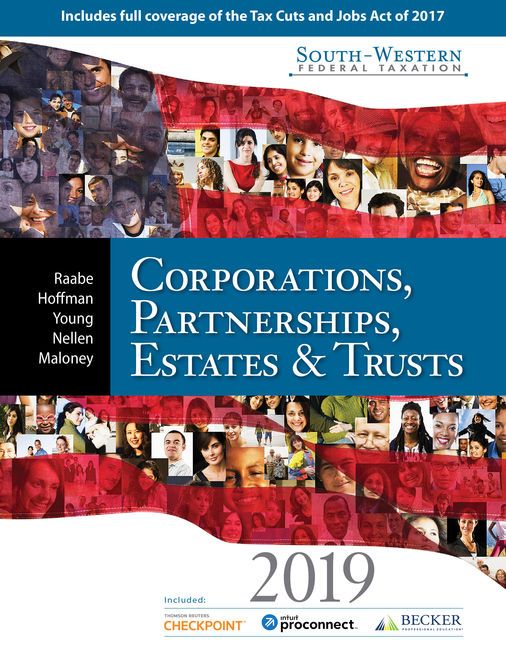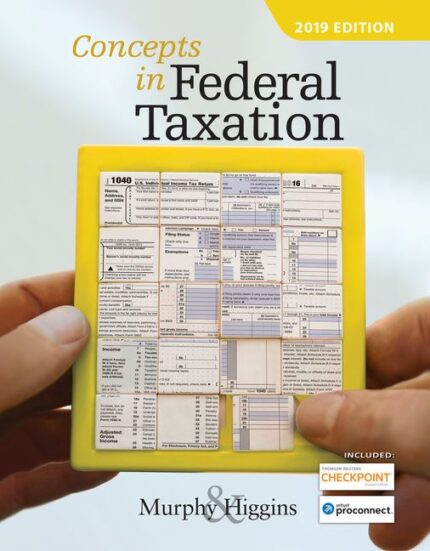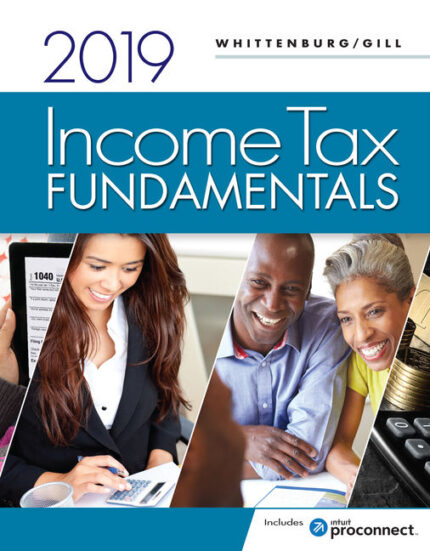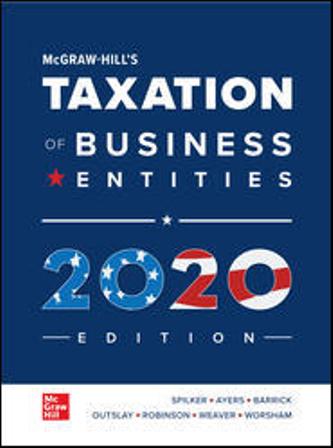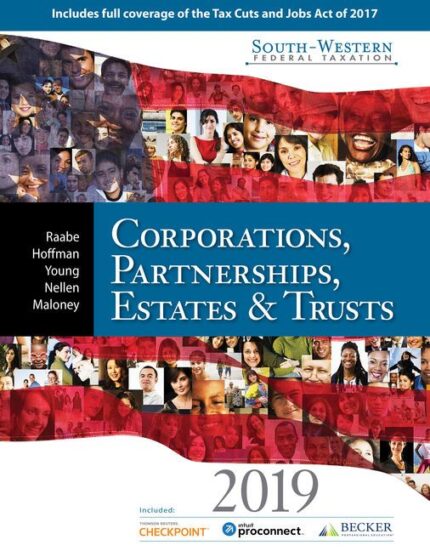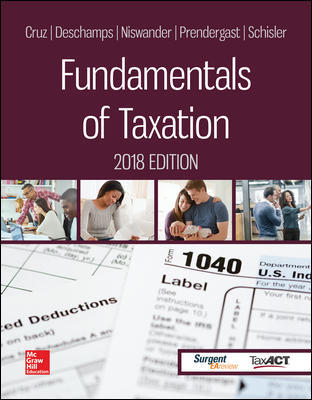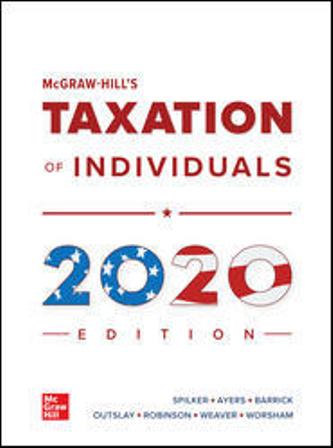Solution Manual for South Western Federal Taxation 2019 Corporations Partnerships Estates and Trusts 42nd Edition by Raabe
CHAPTER 1
UNDERSTANDING AND WORKING WITH THE FEDERAL TAX LAW
Federal Taxation 2019 Corporations Partnerships Estates and Trusts SOLUTIONS TO PROBLEM MATERIALS
DISCUSSION QUESTIONS
1. (LO 1) When enacting tax legislation, Congress often is guided by the concept of revenue neutrality
so that any changes neither increase nor decrease the net revenues raised under the prior rules.
Revenue neutrality does not mean that any one taxpayer’s tax liability remains the same. Since this
liability depends on the circumstances involved, one taxpayer’s increased tax liability could be
another’s tax saving. Revenue-neutral tax reform does not reduce deficits, but at least it does not
aggravate the problem.
2. (LO 2) Economic, social, equity, and political factors play a significant role in the formulation of tax
laws. Furthermore, the IRS and the courts have had impacts on the evolution of tax laws. For
example, control of the economy has been an important economic consideration in passing a number
of laws (e.g., rapid depreciation, changes in tax rates).
3. (LO 2) The tax law encourages technological progress by allowing immediate (or accelerated)
deductions and tax credits for research and development expenditures.
4. (LO 2) Saving leads to capital formation and thus makes funds available to finance home construction
and industrial expansion. For example, the tax laws provide incentives to encourage savings by giving
private retirement plans preferential treatment.
5. (LO 2)
a. Section 1244 allows ordinary loss treatment on the worthlessness of small business
corporation stock. Since such stock normally would be a capital asset, the operation of § 1244
converts a less desirable capital loss into a more attractive ordinary loss. Such tax treatment
was designed to aid small businesses in raising needed capital through the issuance of stock.
b. The S corporation election allows the profits (or losses) of the corporation to flow through to
its individual shareholders (avoiding the corporate income tax). In addition, the qualified
business income deduction will apply to any flow-through profits (allowing a maximum 20%
deduction to the shareholders). However, with the corporate tax rate being 21% (and
individual marginal tax rates potentially being higher), individuals will need to compare the
benefits of avoiding the corporate tax rate with the taxes on any S corporation flow-through
profits.
6. (LO 2) Reasonable persons can, and often do, disagree about what is fair or unfair. In the tax area,
moreover, equity is generally tied to a particular taxpayer’s personal situation. For example, one
equity difference relates to how a business is organized (i.e., partnership versus corporation). Two
businesses may be equal in size, similarly situated, and competitors in the production of goods or
services, but they may not be comparably treated under the tax law if one is a partnership and the
other is a corporation. The corporation is subject to a separate Federal income tax of 21%; the
partnership is not. The tax law can and does make a distinction between these business forms. Equity,
then, is not what appears fair or unfair to any one taxpayer or group of taxpayers. Equity is, instead,
what the tax law recognizes.
1-2 2019 Corporations Volume/Solutions Manual
© 2019 Cengage®. May not be scanned, copied or duplicated, or posted to a publicly accessible website, in whole or in part.
7. (LO 2) This deduction can be explained by social considerations. The deduction shifts some of the
financial and administrative burden of socially desirable programs from the public (the government)
sector to the private (the citizens) sector.
8. (LO 2) Preferential treatment of private retirement plans encourages saving. Not only are
contributions to Keogh (H.R. 10) plans and certain Individual Retirement Plans (IRA) deductible, but
income from these contributions accumulates on a tax-free basis.
9. (LO 2) The availability of percentage depletion on the extraction and sale of oil and gas and specified
mineral deposits and a write-off (rather than capitalization) of certain exploration costs encourage the
development of natural resources.
10. (LO 2) Favorable treatment of corporate reorganizations provides an economic benefit. By allowing
corporations to combine and split without adverse consequences, corporations are in a position to
reduce their taxes and possibly more effectively compete with other businesses (both nationally and
internationally).
11. (LO 2) Although the major objective of the Federal tax law is the raising of revenue, other
considerations explain many provisions. In particular, economic, social, equity, and political factors
play a significant role. Added to these factors is the impact the Treasury Department, the Internal
Revenue Service, and the courts have had and will continue to have on the evolution of Federal tax
law.
12. (LO 2) The deduction allowed for Federal income tax purposes for state and local income taxes is not
designed to neutralize the effect of multiple taxation on the same income. At most, this deduction
provides only partial relief. The $10,000 overall limitation on state and local taxes (effective in 2018)
also reduces the tax benefit of these taxes. Only allowing a full tax credit would achieve complete
neutrality.
a. With the standard deduction, a taxpayer is, indirectly, obtaining the benefit of a deduction for
any state or local income taxes he or she may have paid. The standard deduction is in lieu of
itemized deductions, which include any allowed deductions for state and local income taxes.
b. If the taxpayer is in the 10% tax bracket, $1 of a deduction for state or local taxes would save
$.10 of Federal income tax liability. In the 32% tax bracket, the saving becomes $.32. The
deduction approach (as opposed to the allowance of a credit) favors high-bracket taxpayers.
13. (LO 2) Under the general rule, a transfer of a partnership’s assets to a new corporation could result in
a taxable gain. However, if certain conditions are met, § 351 postpones the recognition of any gain (or
loss) on the transfer of property by Heather to a controlled corporation.
The wherewithal to pay concept recognizes the inequity of taxing a transaction when Heather lacks
the means with which to pay any tax. Besides, Heather’s economic position would not change
significantly should the transfer occur. Heather owned the assets before the transfer and still would
own the assets after a transfer to a controlled corporation.
14. (LO 2) Yes, once incorporated, the business may be subject to the Federal corporate income tax.
However, the 21% corporate tax rate might be lower than Heather’s individual tax rates, especially if
dividends are not paid to Heather.
The corporate income tax could be avoided altogether by electing to be an S corporation. An
S corporation is generally not taxed at the corporate level; instead, the income flows through the
corporate veil and is taxed at the shareholder level. An S election allows a business to operate as a
corporation but be taxed like a partnership. With a partnership, there is no double tax. Income and
expenses flow through to the partners and are taxed at the partner level.

